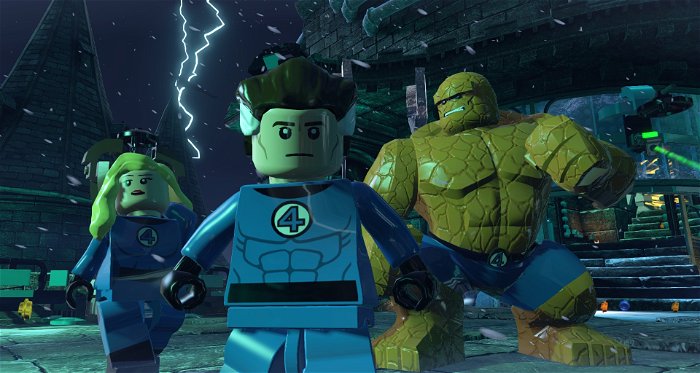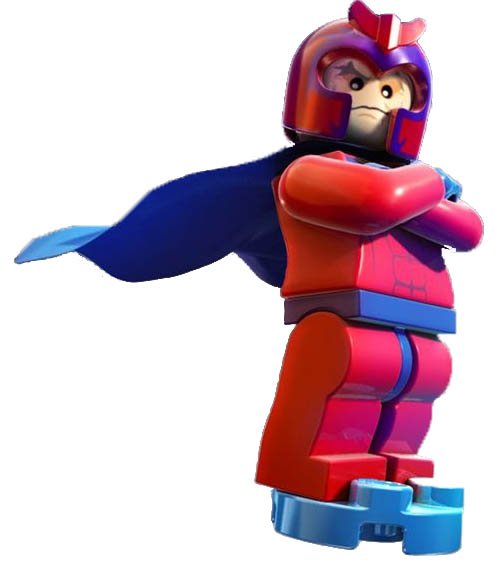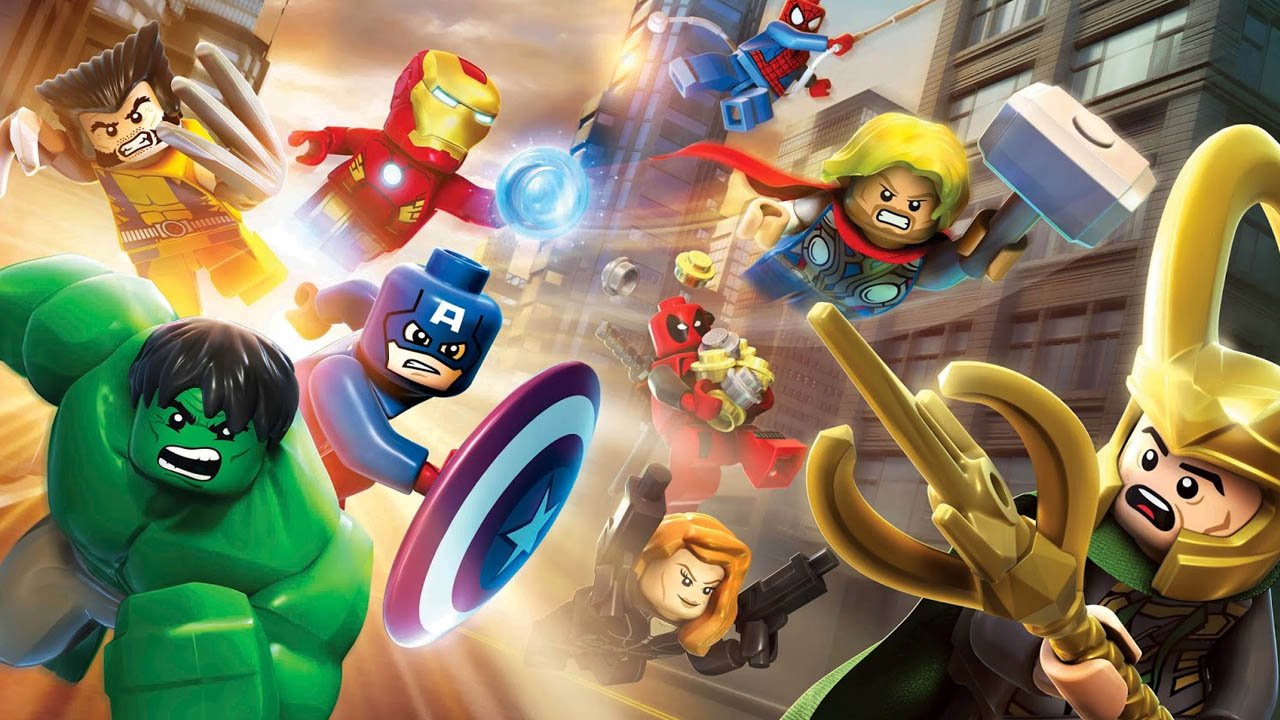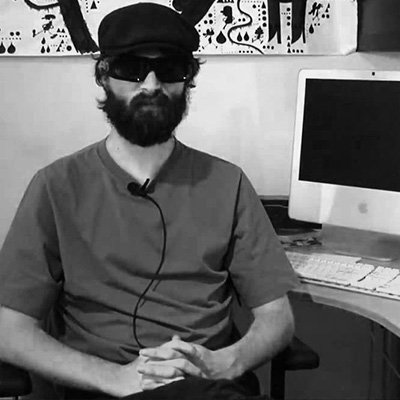I will note that I have never played a Lego title before, and am not comparing this to previous games. I’m also not an avid comic reader, though I am aware of most Marvel characters in broad strokes and have read some of the classics. It’s not rightly necessary with this game as it does a solid job of establishing character relations even with minimal knowledge (and let’s face it, if you’re getting this for yourself or your kids, you’re most likely aware of Marvel on some level). And there’s also a decent little platformer in there for everyone to play.
Lego Marvel Superheroes‘ plot begins with the Silver Surfer, the herald of the planet-eating giant Galactus, flying through the skies above Earth, shot down by a Lego plane, his surfboard shattered into gleaming black bricks. Supervillains climb out. It gets progressively weirder after that as every mission or plot point is an excuse to bring in as many different Marvel characters as possible. It’s a decidedly Silver Age plot, befitting the Lego motif and the bright, over-the-top world. At one point, dinosaurs are involved.

The game doesn’t take itself seriously, and opts for an irreverent tone. No character is spared from this treatment, with even the most villainous played for laughs, and the game is entirely self-aware. It even goes into some rather strange cultural references as well (Jackson-Nick Fury makes a Pulp Fiction reference. There’s no way that this is aimed at children). The characters are, as a note, a mixture of comic book and movie versions varying from character to character (the Mandarin, in his comic version, makes a visual gag commenting on his movie incarnation). In each instance of picking movie or comic version, or a particular era, they make the best choice and make the character unique.
The core of the game is the heroes, and these are done well. There are a truly staggering number of character options, some of which are acquired as you play the main story missions, others that open up as you discover them in Manhattan or in the side missions. Unlocking them costs bits, which are collected mostly by breaking things (pretty much anything made of Lego can be broken to release silver and gold currency) or just lying around, and it respawns whenever you leave and return. I get the impression every hero has a unique voice, with occasional reused sounds. The powers are varied, and some characters even have extra utility. Venom, for example, can undergo a grotesque transformation from the tentacled, Spiderman-powered human version to a hulking brute.

Powers often repeat among heroes but vary and are largely consistent (with the exception of Mr. Fantastic being able to turn into fully functional objects like rockets, which goes beyond the whole ‘stretch his body lots’ power). Different levels and puzzles require different abilities, such as gold objects requiring fire to heat up to explode, water requiring ice powers to manipulate. Levels have an initial character loadout for the first run, but ‘free play’ mode opens after you beat it to allow you to use any hero. Other objects exist that use other solutions not available in the first playthrough, allowing you to continue with other groups or unlock more collectables. There are even some strange powers that stand outside of the normal puzzle solutions, like Squirrel Girl’s ability to throw squirrels (frankly, if she weren’t in a game like this, I’d call the biggest foul).
The game’s open world sections take place on Manhattan Island, populated by Lego people and vehicles. Notable Marvel structures like S.H.I.E.L.D’s heli-carrier, Stark Towers, and even the Marvel Comics offices (one of the more surreal side missions) dot the landscape. These areas are full of collectable golden bricks and unlockable vehicles and heroes, found by solving puzzles using your powers, or by helping out citizens on mini-missions (that come with a rather helpful chain of markers leading to the object). The game’s main missions are multi-stage arenas, often littered with collectable items, such as mini-kits and an accident-prone and distressed Stan Lee. Side missions are much shorter self-contained stories, narrated by the self-parody Deadpool. There’s plenty to do in the game, and it doesn’t seem to fall short in terms of content compared to something like Scribblenauts‘ DC comic entry.

It should be noted that it’s not possible to get a Game Over here. Death results in your character shattering and losing some Lego bits then immediately respawning (allowing you to salvage some of your lost money). Respawn time is fast, and you mostly respawn in a safe place, but occasionally the game will get caught in a loop when you fall where you continuously respawn on the edge and slip off, or get stuck. Fortunately, you can usually get around this by moving to the next area, or just by leaping about; I didn’t have to restart due to this. In addition, you don’t lose money for a character’s death unless you’re controlling them, so friendly fire is only an issue in multiplayer if you’re going to maximum money.
It’s not a hard game by any means. Most puzzles are simple and straightforward, and missions always give you prompts as to which character is necessary for each obstacle. The boss fights are quite fun and tend to be varied in terms of events and strategy, though some patterns repeat over time. Again, they’re not hard, but it’s pretty fun to drop a crate on Juggernaut’s head or freeze him in a block of ice.
The voice acting and the music deserve special credit in this game, for capturing the grandiose and silly world you’re playing in and for generally being high quality. Nolan North as Deadpool is a given and is played as you would expect. In addition, Stan Lee makes an appearance, but that’s no surprise given his overzealous talent for self-promotion.

The game also has a two-player co-op function, allowing each player to control one character, and switch to any inactive members of the roster. It’s about as fun to play as single-player, and goes somewhat faster with two people coordinating, but it also becomes more confusing. The split-screen tries to be fluid when players move apart, but becomes inconsistent in its comic-panel structure and makes it hard to gauge perspective when dealing with complex movement or puzzles. Being unable to switch to taken characters sometimes locks you in and throws you off, though free-play allows you to switch at any time by holding Y and allows duplicates, so it’s mostly in actual missions.
There are a few notable issues with the gameplay that can easily disrupt the game, beyond what’s mentioned. The camera moves into a largely fixed position whenever you enter a mission and this results in some unfair deaths due to perspective. I also encountered issues with the in-game scripted events, where you can be attacked during sequences (though you don’t seem to suffer damage), and one case where I broke a boss and forced a restart. While decidedly minor, these did affect my enjoyability.
This might be a good game to play with your kids. If not, let them play it, and play it yourself when they’re asleep. You’ll probably get more of the jokes than they do (and they might like the more inane ones).






